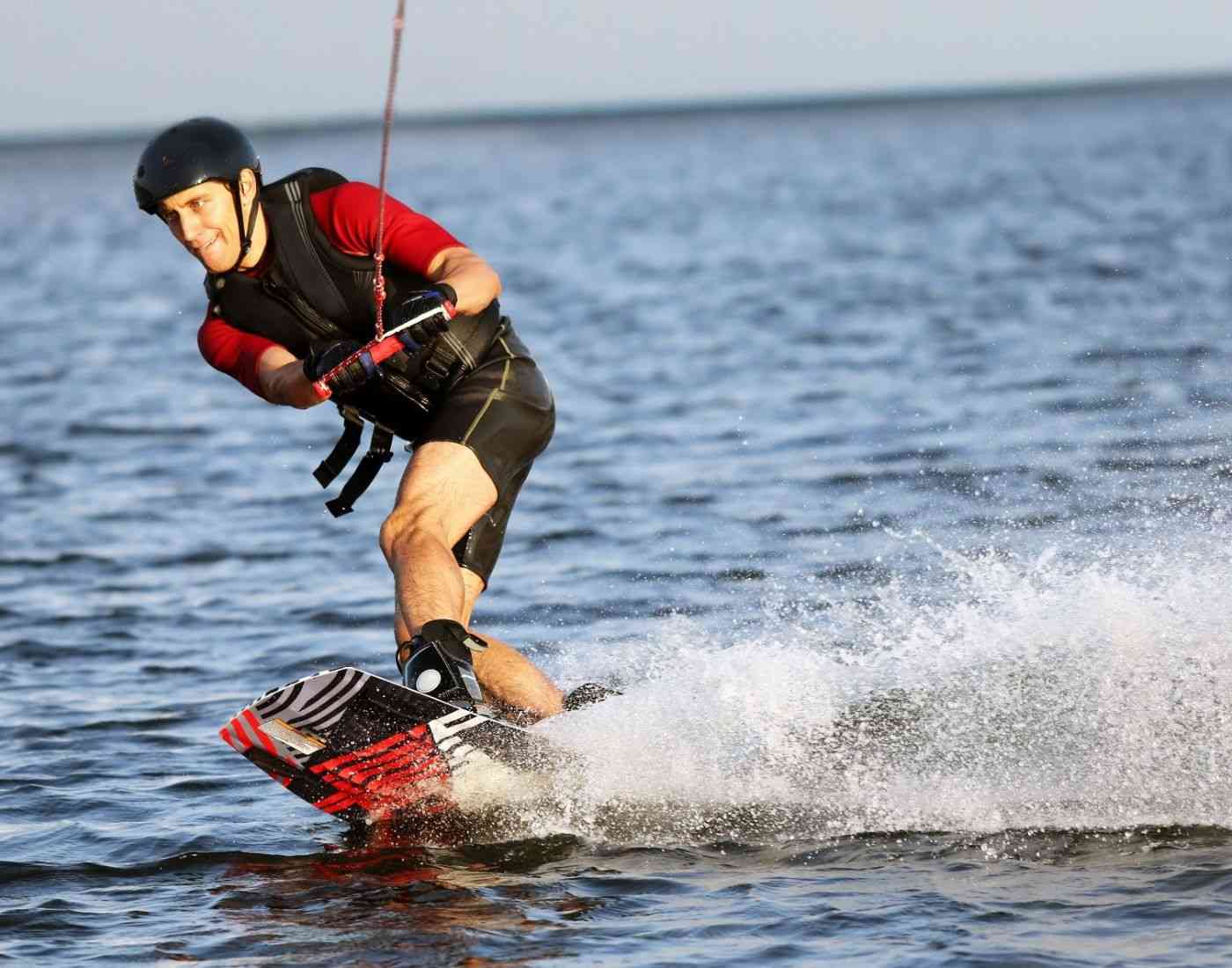
Waterskiing is a thrilling and adrenaline-inducing water sport that has captivated adventure enthusiasts for decades. Whether you’re a seasoned waterskier or just curious about the sport, there’s no denying the rush of gliding across the water’s surface at high speeds.
In this article, we’ll dive into 19 fascinating facts about waterskiing that will not only pique your interest but also deepen your understanding of this exhilarating activity. From its origins to its evolution as a competitive sport, and even exploring the remarkable records set by waterskiing champions, this article will take you on a journey through the vibrant world of waterskiing.
So, grab your life jacket, put on your skis, and get ready to learn some incredible facts about waterskiing that will surely leave you yearning for a day out on the water!
Key Takeaways:
- Waterskiing has a rich history dating back to the 1920s, and it’s a full-body workout that provides an adrenaline-filled experience behind various types of boats.
- Waterskiing offers a thrilling way to explore different bodies of water and can be enjoyed by people of all ages, making it a fantastic and social activity for everyone.
Waterskiing dates back to the early 1920s.
Did you know that waterskiing has been around for nearly a century? It was first introduced in the 1920s when water skis were created by attaching wooden planks to a pair of boots.
The sport became popular in the 1950s.
In the 1950s, waterskiing gained immense popularity, thanks to advancements in technology and the introduction of fiberglass skis, which provided better control and maneuverability.
Waterskiing is an Olympic sport.
Since 1972, waterskiing has been recognized as an Olympic sport, showcasing the incredible skill, strength, and precision required to master this exhilarating activity.
The world record for the fastest waterskiing speed is 160.2 mph.
Hold on tight! The current world record for the fastest waterskiing speed is an astonishing 160.2 mph (257.8 km/h), achieved by British skier Jamie Beauchesne in 2012.
Waterskiing can be done behind various types of boats.
From speedboats to jet skis, waterskiing can be enjoyed behind a wide range of watercraft, catering to different preferences and skill levels.
Waterskiing is a full-body workout.
When you hit the water on skis, you engage your core, legs, and arms, providing a complete workout that helps improve strength, endurance, and balance.
Trick skiing is a popular discipline within waterskiing.
Among the various disciplines within waterskiing, trick skiing stands out. This discipline involves performing acrobatic tricks and stunts while being towed behind a boat.
Waterskiing is an adrenaline-filled experience.
There’s nothing quite like the rush of excitement and adrenaline you feel when you’re being pulled through the water at high speeds, defying gravity and conquering the waves.
The first official waterskiing competition took place in 1939.
Waterskiing competitions have a rich history, with the first official tournament being held in 1939 in Jones Beach, New York.
Parasailing and wakeboarding originated from waterskiing.
Did you know that parasailing and wakeboarding evolved from waterskiing? These thrilling water activities have their roots deeply connected to the sport of waterskiing.
The first double waterski ride happened in 1936.
In 1936, Dick Pope Sr. introduced the concept of double waterskiing, where two skiers could be towed on separate skis behind a boat. This innovation opened up new possibilities for the sport.
Waterskiing has its own set of hand signals.
To communicate with the boat’s driver while on the water, waterskiers use a specific set of hand signals, ensuring clear communication even when shouting is not an option.
Slalom skiing is a popular discipline in waterskiing.
Slalom skiing involves navigating through a course of buoys while maintaining a tight line and turning at high speeds. It requires precision, agility, and quick reflexes.
Waterskiing can provide a sense of freedom and connection to nature.
Gliding across the water’s surface, feeling the cool breeze on your face, and witnessing the beauty of nature all around you can create a profound sense of freedom and tranquility.
Waterskiing can be enjoyed by people of all ages.
Regardless of your age, waterskiing can be a thrilling and enjoyable activity. Many ski schools and clubs offer lessons and programs catered to different age groups and skill levels.
The world’s largest waterskiing tournament takes place annually.
The Goode Water Ski National Championships, held every year since 1939, is the largest waterskiing tournament in the world, attracting top skiers from around the globe.
Waterskiing requires proper safety equipment.
When participating in waterskiing, it’s crucial to wear a properly fitted life jacket and maintain a safe distance from other watercraft to ensure a fun and safe experience.
Waterskiing can be a social activity.
Waterskiing is not only an individual sport but can also be enjoyed as a group activity. Skiers can take turns behind the boat, creating a fun and social atmosphere on the water.
Waterskiing is a fantastic way to explore different bodies of water.
Waterskiing allows you to explore lakes, rivers, and even coastal areas from a unique perspective, providing a thrilling and immersive experience in stunning natural surroundings.
Conclusion
In conclusion, waterskiing is a thrilling water sport that offers excitement and adventure. From its early origins to its Olympic recognition, this sport has evolved over the years and continues to captivate enthusiasts around the world. With its benefits for physical fitness and mental well-being, waterskiing is a fantastic way to enjoy the water and embrace the exhilaration of gliding across its surface.Whether you’re a seasoned waterskier or just starting out, these 19 facts about waterskiing have given you a deeper understanding of the sport. From its humble beginnings to its influence in the world of extreme sports, waterskiing has left a lasting impact on water sports enthusiasts everywhere.So pack your gear, find a suitable location, and dive into the adrenaline-pumping world of waterskiing. Whether you prefer slalom skiing, trick skiing, or wakeboarding, one thing is for certain – you’ll be in for an incredible experience that combines fun, skill, and a love for the water.
FAQs
1. How do I get started with waterskiing?
Getting started with waterskiing requires finding a suitable location with calm and clear water. It’s recommended to take lessons from a certified instructor to learn the proper techniques and safety guidelines.
2. What equipment do I need for waterskiing?
You will need a pair of water skis, a life jacket, and a tow rope. Optionally, you can also use a wetsuit or drysuit depending on the water temperature.
3. Can anyone waterski regardless of their fitness level?
While waterskiing can be enjoyed by people of various fitness levels, it does require some level of physical strength and coordination. It’s always a good idea to consult with a healthcare professional before starting any new physical activity.
4. Are there any age restrictions for waterskiing?
There are no specific age restrictions for waterskiing. However, children should be supervised and follow age-appropriate guidelines for safety.
5. Are there different types of waterskiing?
Yes, there are different types of waterskiing such as slalom skiing, trick skiing, and wakeboarding. Each type has its own unique characteristics and techniques.
6. Can I waterski in any body of water?
While waterskiing can be done in various bodies of water like lakes, rivers, and even the ocean, it’s important to ensure that the body of water is appropriate and safe for the activity.
7. Is waterskiing a dangerous sport?
Like any water sport, there are inherent risks involved in waterskiing. However, by following proper safety guidelines, wearing appropriate protective gear, and receiving proper instruction, the risks can be minimized.
8. Can I waterski if I don’t know how to swim?
It is highly recommended to know how to swim before attempting waterskiing. Being comfortable in the water and knowing basic swimming techniques can greatly enhance safety.
Waterskiing offers endless thrills, but there's even more to explore! For those seeking an extra adrenaline rush, barefoot water skiing takes the excitement to new heights. Curious about how this exhilarating sport came to be? Dive into captivating facts that shed light on waterskiing's rich history and evolution. Ready to witness jaw-dropping feats of athleticism? Water ski jumping showcases the incredible skills and bravery of top athletes as they soar through the air, pushing the boundaries of what's possible on the water.
Was this page helpful?
Our commitment to delivering trustworthy and engaging content is at the heart of what we do. Each fact on our site is contributed by real users like you, bringing a wealth of diverse insights and information. To ensure the highest standards of accuracy and reliability, our dedicated editors meticulously review each submission. This process guarantees that the facts we share are not only fascinating but also credible. Trust in our commitment to quality and authenticity as you explore and learn with us.


